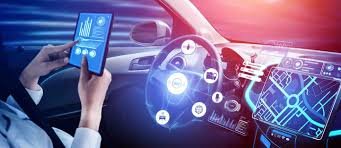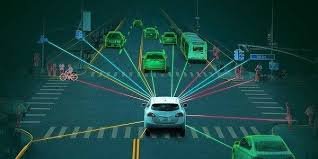
Artificial Intelligence (AI) is revolutionizing the automotive industry, particularly in driving automation. From advanced driver-assistance systems (ADAS) to fully autonomous vehicles, AI-powered technologies are shaping the future of transportation. This article explores the pivotal role of AI in driving automation through a series of questions and answers.
Q1: What is the significance of AI in driving automation?
A: AI plays a crucial role in driving automation by enabling vehicles to perceive their surroundings, make decisions, and navigate autonomously. AI algorithms process data from sensors such as cameras, radar, lidar, and ultrasonic sensors to interpret road conditions, detect obstacles, and respond in real-time. This capability is essential for achieving higher levels of automation, reducing accidents, and improving overall road safety.
Q2: What are the levels of automation in vehicles, and how does AI contribute to each level?
A: The Society of Automotive Engineers (SAE) defines six levels of automation, ranging from Level 0 (no automation) to Level 5 (full automation). AI enhances each level by providing capabilities such as adaptive cruise control, lane-keeping assistance, automated parking, and ultimately, fully autonomous driving where the vehicle operates without human intervention under all conditions.

Q3: How does AI enhance safety features in vehicles?
A: AI-powered safety features enhance vehicle safety by continuously monitoring the environment and predicting potential hazards. Features like automatic emergency braking (AEB), pedestrian detection, blind-spot monitoring, and cross-traffic alert systems rely on AI to identify risks and assist drivers in avoiding collisions. These technologies mitigate human error, which remains a leading cause of accidents on the road.
Q4: What are some challenges AI faces in driving automation?
A: Despite advancements, AI-driven driving automation faces challenges such as interpreting complex traffic scenarios, ensuring robust cybersecurity to protect against potential hacking threats, addressing ethical considerations in decision-making processes, and navigating regulatory frameworks that vary across regions. Overcoming these challenges is crucial for the widespread adoption and acceptance of autonomous vehicles.

Q5: How is AI contributing to the development of fully autonomous vehicles?
A: AI is at the core of developing fully autonomous vehicles capable of navigating diverse road conditions and scenarios. Machine learning algorithms enable vehicles to learn from experience, improve decision-making capabilities, and adapt to unpredictable situations. Ongoing research focuses on refining AI models, enhancing sensor technologies, and integrating vehicle-to-everything (V2X) communication to enable safer and more efficient autonomous driving.

Table: Levels of Automation in Vehicles and AI Contributions
| Level | Description | AI Contributions |
|---|---|---|
| Level 0 | No automation; human driver performs all tasks | AI may assist with driver alerts and monitoring |
| Level 1 | Driver assistance; vehicle can assist with steering or acceleration/deceleration | AI enhances features like adaptive cruise control |
| Level 2 | Partial automation; vehicle can control both steering and acceleration/deceleration, but driver must remain engaged | AI enables advanced driver-assistance systems (ADAS) |
| Level 3 | Conditional automation; vehicle can manage most driving tasks, but driver must be ready to intervene | AI facilitates more complex decision-making and navigation |
| Level 4 | High automation; vehicle can perform all driving tasks under certain conditions, with no human intervention required | AI enables vehicles to operate autonomously in specific environments |
| Level 5 | Full automation; vehicle can perform all driving tasks under all conditions, with no human intervention required | AI supports fully autonomous driving capabilities |

The integration of AI in driving automation represents a transformative shift towards safer, more efficient, and accessible transportation. As technology continues to evolve, AI-powered innovations will continue to shape the future of automotive mobility, paving the way for a new era of autonomous driving experiences.